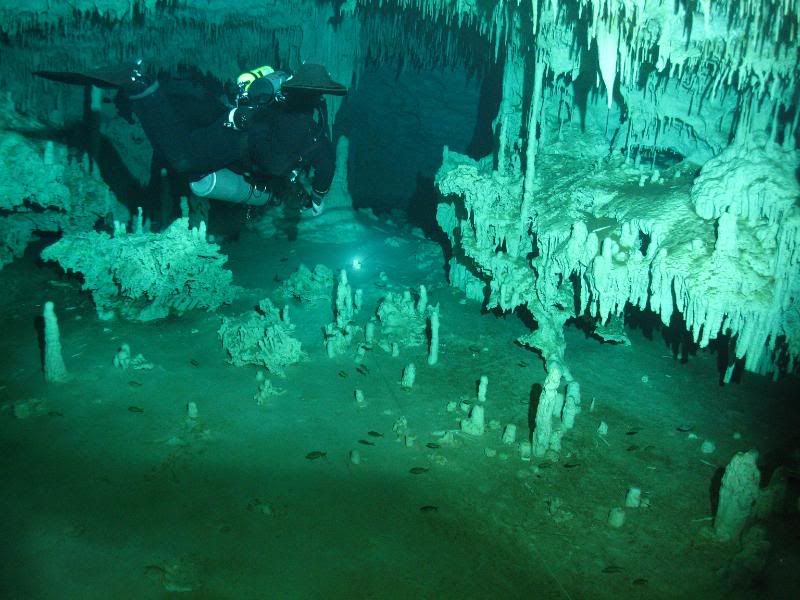Mark Chase has written a big report about our new TWINLED:
Following on from the excellent Photon LED Cave MB Sub have taken a bold an
innovative step in the field of torch options and redundancy. The present
trend of torches demands a tight beam for signaling / underwater
communication and a high lumen output. The needs of cave divers and multi dive divers
is for ever longer burn times, preferably without the massive battery
packs we required in the past.
Pre 2000 a 60min burn time on a 50W Halogen torch was considered ample
light and ample burn time for open water diving. After all, you don't need a
torch on deco. However the cave divers were pushing through the dark all the
way out and they required a margin of safety on top of the planned dive
time. Four hour + burn times meant carrying massive battery packs and the
open water divers displayed no desire to be lumbered with those unnecessarily.
The advent of very small and very powerful NiMh and lately Lithium Iron
battery’s changed all this. The want for monster burn times spilled over to
the OW diver.
If there is such a thing as a “benchmark burn time” Id hazard the
suggestion it would be considered today even by open water divers to be in the
region of 4 hours.
At the same time as this demand for increased burn times occurred we
started to demand incredible light power. 50W Halogens were no longer considered
powerful enough as 18w HID’s became the must have piece of kit.
Again if there were to be a benchmark power out put today’s id suggest it
is the 21W HID. There are more powerful lights and there’s plenty of diving
that doesn't require 21W HID performance but this does appear to be the
generally accepted standard among the technical diving community.
Now a well established market, the HIDs have suffered from issues with
faulty ballasts and fragile bulbs. The loss of a primary light being of great
concern to all divers, the market has opened up for the emerging technology
of rugged, solid state, high performance LED torches. These satisfied the
demands of those who have lost faith in HID bulbs and in some cases for
those divers who find the intensity of a HID light to be less than optimal for
their stile of diving.
If your designing a torch for the diving community today you need to do
something quite special to stand out from the crowd of 21W HID’s and multi
emitter LED heads. You also have to remember the key issues:
1: Reliability
2: 4 hour Burn time minimum
3: 21W HID performance
4: A tight focused beam for signaling
5: Good general illumination.
Enter the MB SUB TWIN LED CAVE
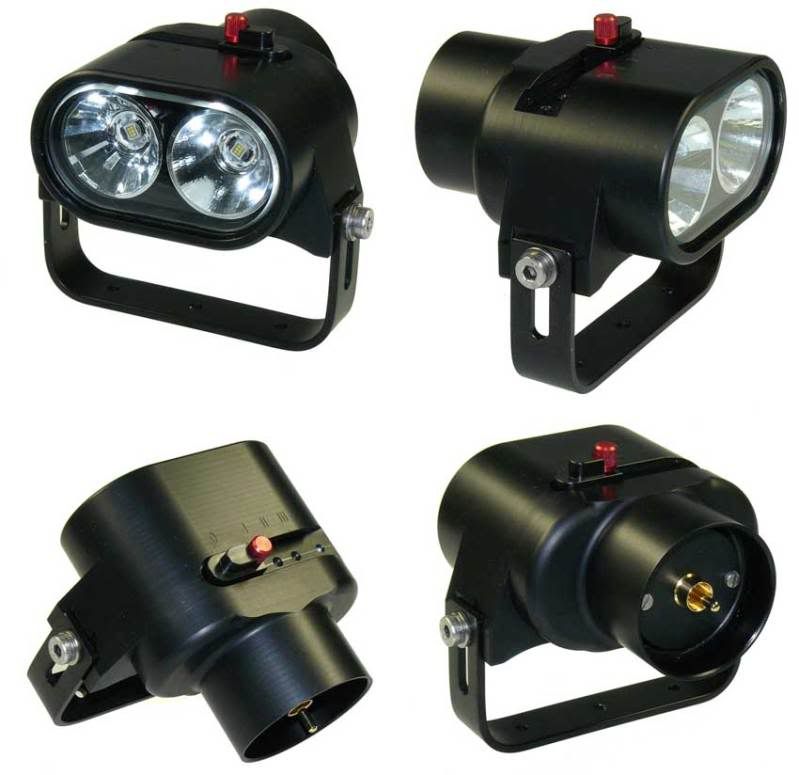 The new TwinLED head fits on to the standardised Photon battery pack
The new TwinLED head fits on to the standardised Photon battery pack
enabling owners of the Photon to upgrade by purchasing the torch head only.
Milled from a solid billet of aluminium it is depth rated to 200m and contains
a choice of 1000 lumen Ostar LEDs.
The heads can be configured with a 10degree spot bulb and 20degree flood,
two spots and of course two floods. In operation the diver has the choice
of a single spot on 50% power offering a staggering 12 hours burn time or a
single spot on 100% power offering six hours burn time.
Spot Flood Head
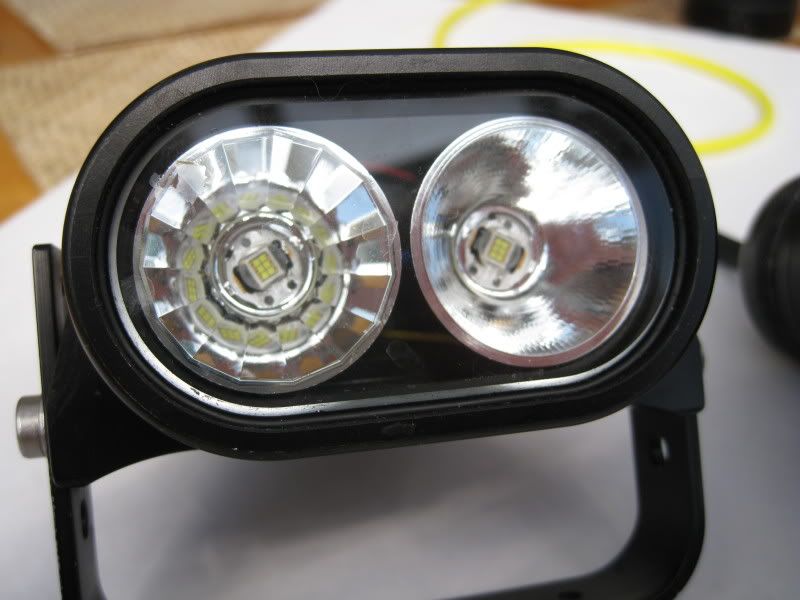
Spot Head
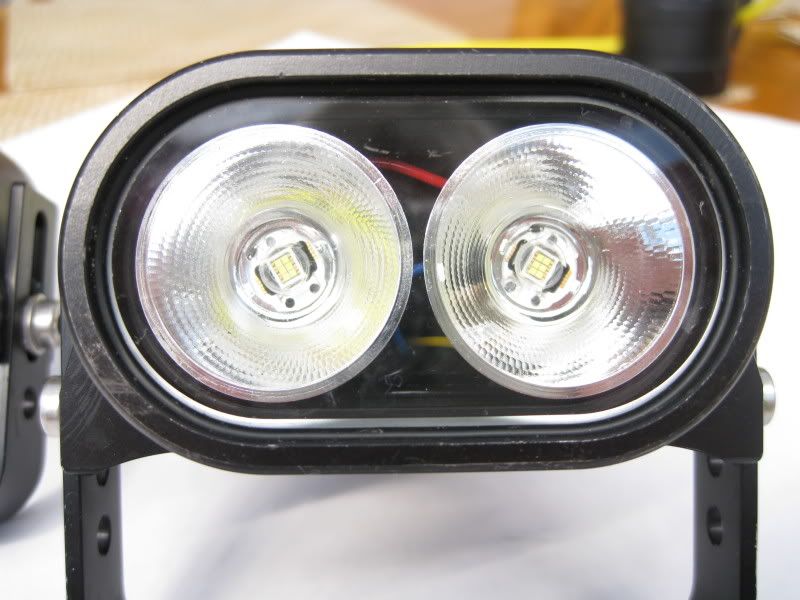
Should a bulb fail the second LED can be switched on with no loss of
performance. Each bulb is individually managed to allow complete redundancy in
all areas with the obvious exception of the connection to the power source.
For wreck divers and especially cave divers, having this redundancy in the
torch head offers real security. Back up torches are able to get you out
of a situation where a primary has failed but they are not designed to allow
the dive to continue as normal. This twin LED system offers the diver the
opportunity to carry what is basically a redundant primary torch covering
the main failure areas of the bulb and the controlling electronics.
However, on the occasions when the diver should require optimum power from
his torch they have the further option to switch on both light heads and
produce 2000 lumens of light. In doing so the burn time will drop to just
over two hours thirty five min’s on a full charge, which should still be more
than adequate for most dives.
In order to avoid total loss of illumination and damage to the batteries
by fully draining them the MB Sub has incorporated some clever discharge
protection controls. At a pre set power out put level the torch will revert to
power save mode giving over an hour and a half of further emergency use.
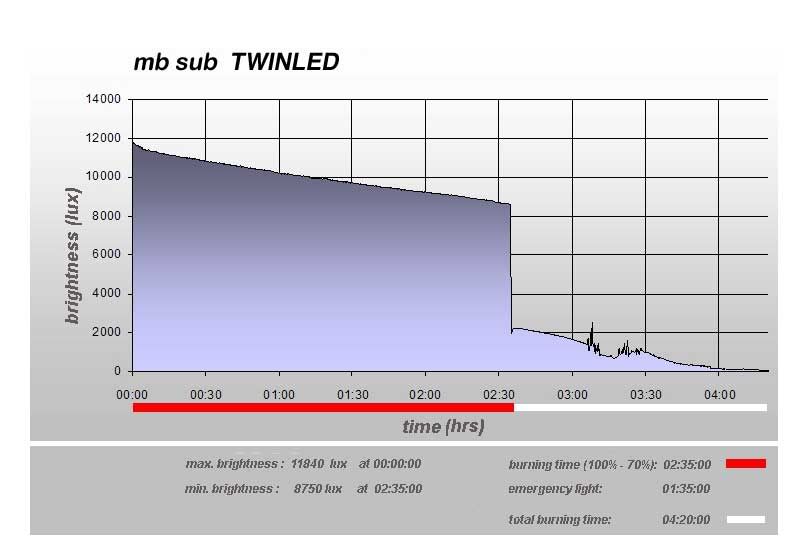
With the range of options available the diver can decide to run the torch
in safety mode of a single bulb running for maximum burn time with
redundancy in the primary head. At time where more power is required he can
simply double the light output by switching on the second bulb and reverting to
safety mode again once the moment has passed.
DESIGN
The new head incorporates the excellent fully adjustable Goodman’s handle
previously used on the Photon. Adjustment is via Allen bolts which fit a
standard scuba tool ensuring you will be able to adjust them at most dive
sites even if you left your tools at home. Id still prefer a simple screw for
this which can be adjusted with the edge of a knife or a coin but if your
going to use an Allan bolt, this is the next best choice.
A well thought out loop is designed in for attaching a P clip and the
light head controls are lockable to ensure stowed lights are not accidentally
turned on. The red knurled knob screws down into the dimples in order to
achieve a definite lock on the chosen light option.
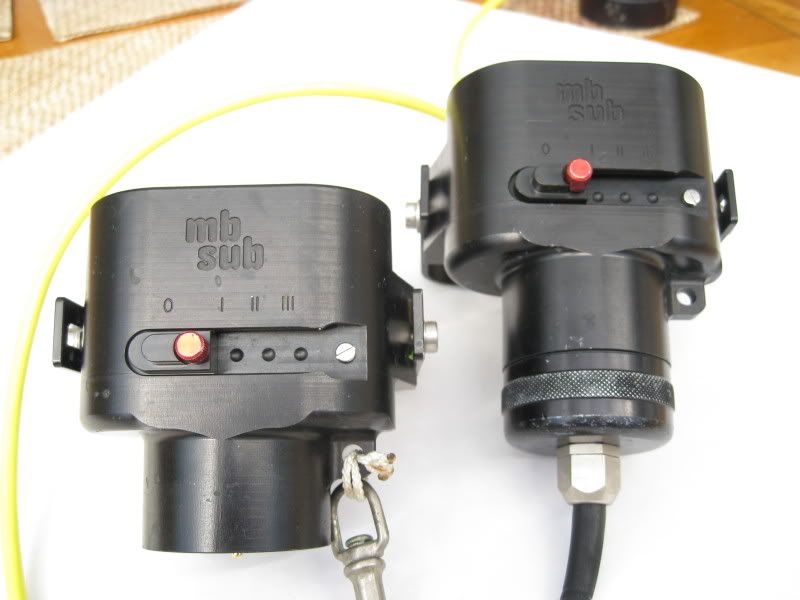
Position 1: Half power single bulb. Position 2: Full power single bulb and
Position 3: Full power duel bulb. As before the head is attached via a
double 0ring sealed connector and power is transferred through a gold plated
coax type plug.
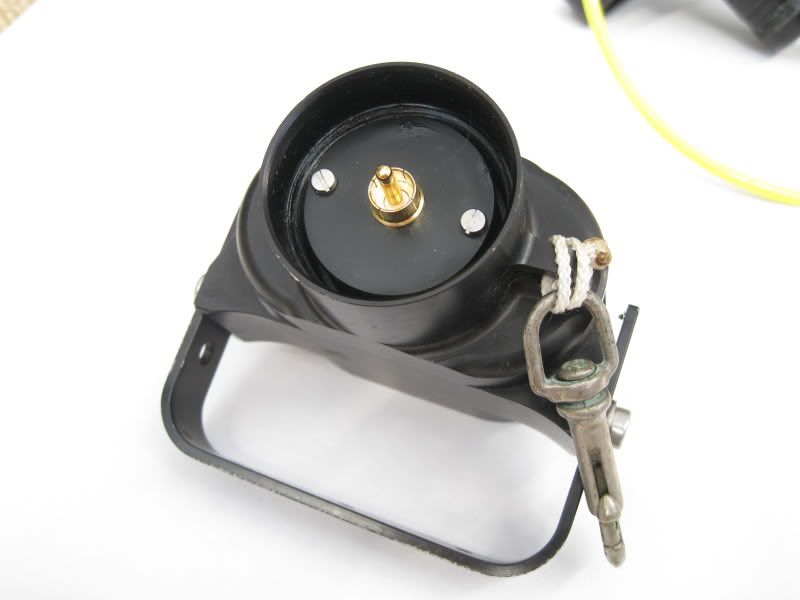
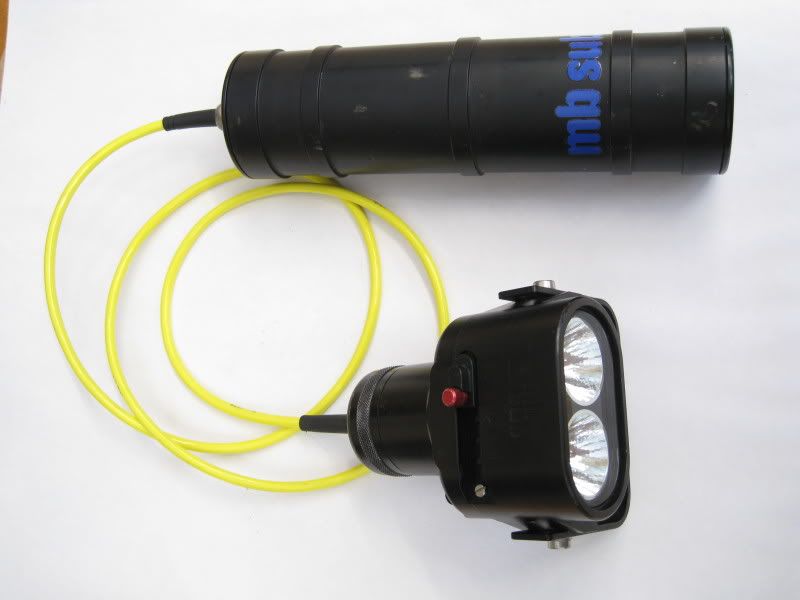
In use the light head feels very comfortable and controls are easy to op
orate. However you do need to take care not to over tighten the locking nut
making it difficult to undo with gloved hands and limited grip. The switch
is a magnetic proximity type offering no failure point for flooding.
PERFORMANCE
Over the last five months we have tested the torch to a depth of 76m max
on a range of dives in visibility down as low as a couple of meters with a
high level of particulates in the water and on dives with unlimited
visibility. In March we did a full weeks cave diving in Mexico carrying out two
dives a day and testing both the twin spot and spot flood combinations.
As usual we started our testing dry and in the infamous Chasey pond.
Having previously tested the Ostar 1000Lumin LED against the 10W Halcyon HID it
was decided to pull no punches and wheel out the 21W Salvo for comparison.
Test 1: Illumination at a range of 6m
MBSub on single spot 50% power
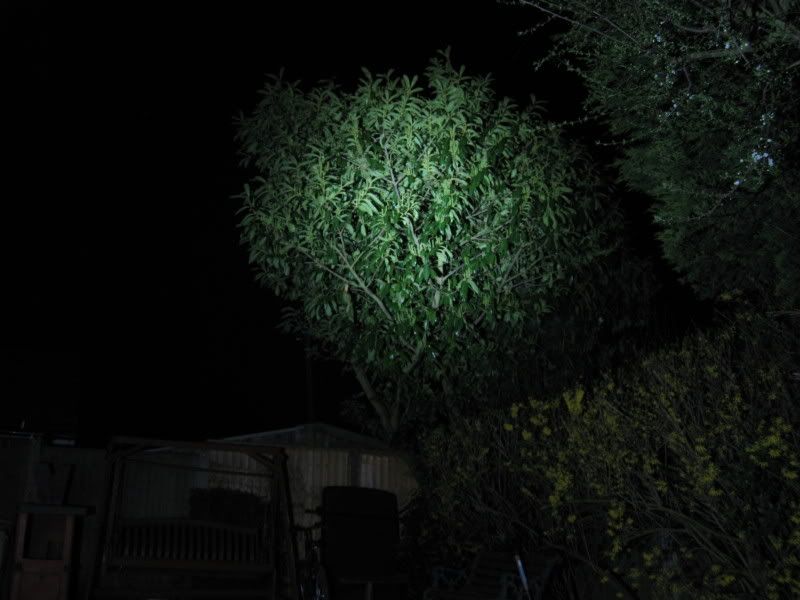
MBSub on single spot 100% power
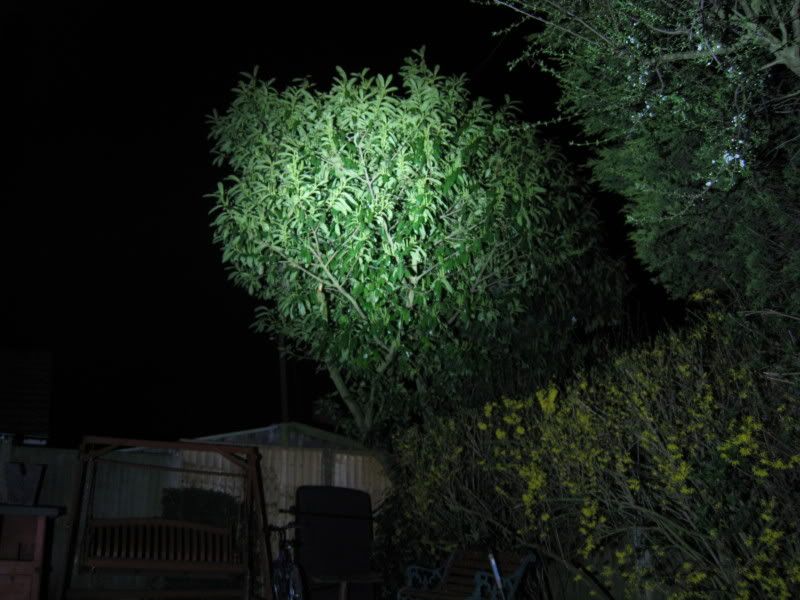
MBSub on duel spot 100% power
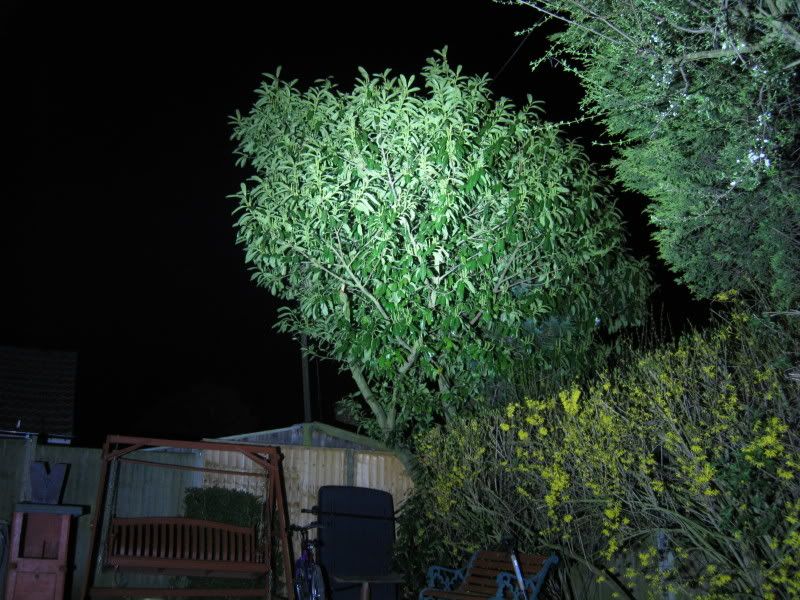
Salvo 21W HID
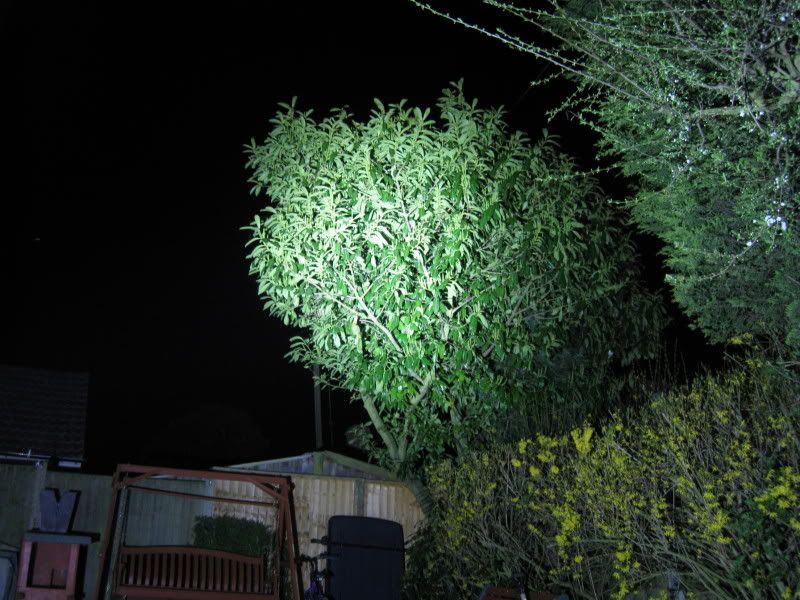
TEST2: Light spread in fresh water at a depth of 0.5m
MB Sub Twin LED full power duel spot
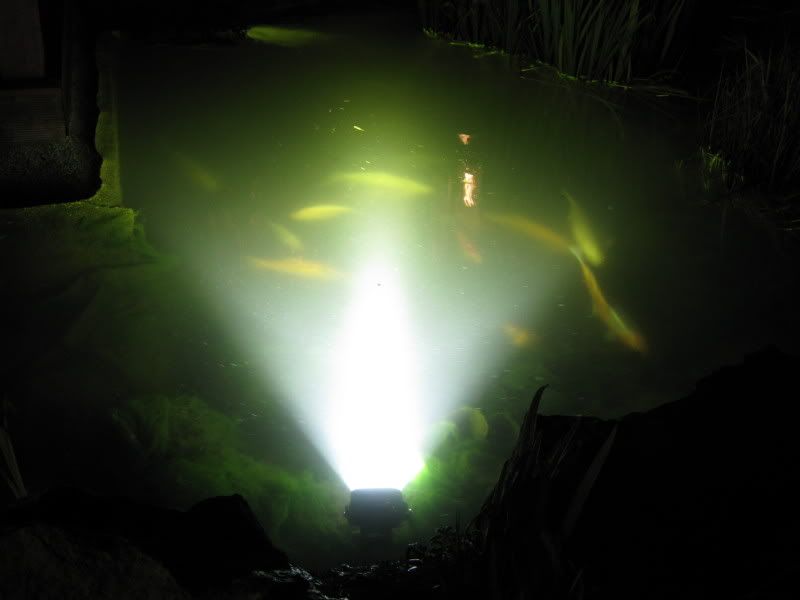
Salvo 21W HID
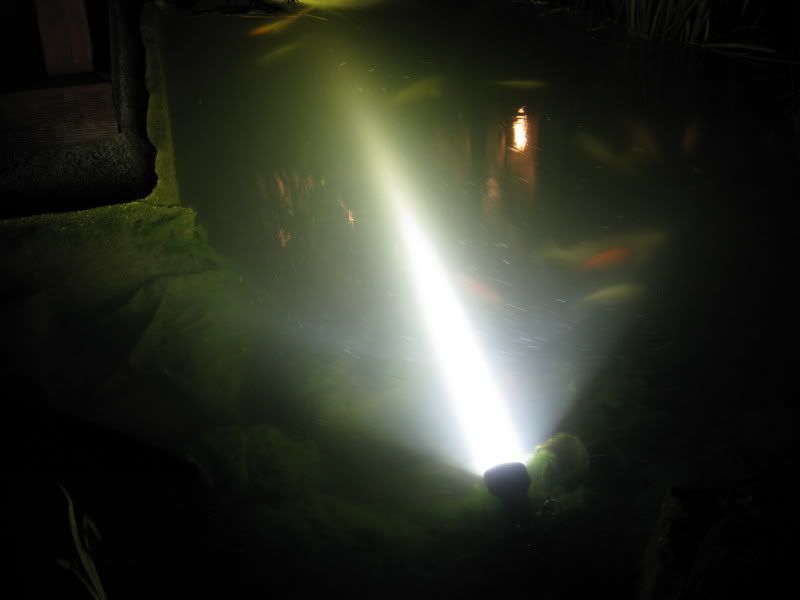
Side by Side
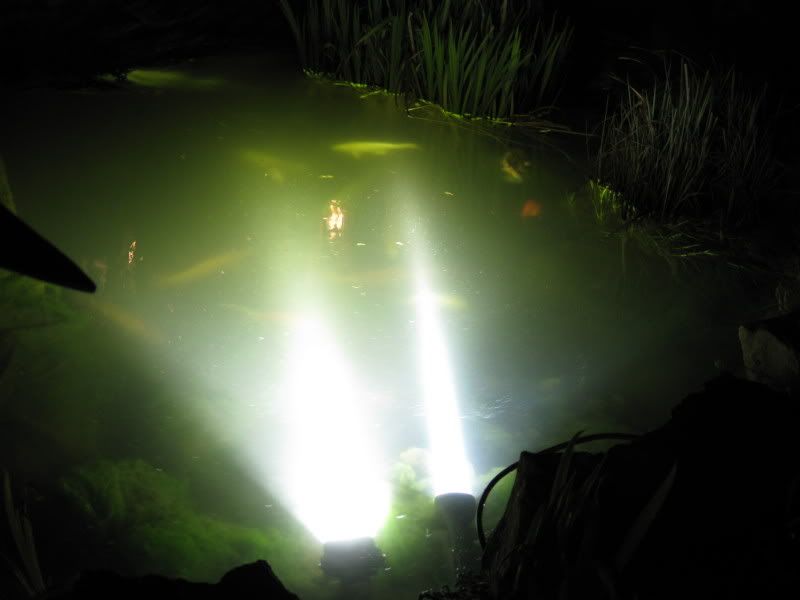
The photos demonstrate a microcosm of what the torches are like to dive.
For UK OW diving I used the twin spot LED and found it on its highest
setting to be the most powerful LED torch I have ever used. The first position
low power single LED became redundant. With over two hours available on full
power and my average bottom time in OW being less than one hour I found my
self using the full power Twin LED function all the time.
The end result was a truly magnificent beam of light which I felt rivaled
the 21W salvo over a range of up to 3-4m. Over 4m the focus of the Salvo
would win out and out perform the MB Sub. As a long range signaling device
the HID still reigns supreme.
However the blistering intensity of the beam was less useful for seeing
what was immediately in front of you. The Twin LED cave had a much brighter
peripheral spread of light. Once inside a wreck it gave less of a tunnel
vision effect. The MB Sub could also be turned down to a single spot where upon
it would give a very pleasing light for rummaging around immediately in
front of your self. The Salvo is more a one trick pony. It is epic at long
range but as soon as the focus is pulled out on the reflector it becomes week
by comparison with an annoying dead spot in the middle.
Seen here we have a side by side video of the 21W Salvo and the single
Ostar 1000limin spot on full power. Sadly problems with the video system
prevented open water shots of the TwinLED in action with both bulbs on the UK
wrecks. Fortunately it was fixed and video was shot in the caves but we had
to return the torch before we were able to capture and decent wreck
footage. We hope to have the cave footage available soon.

This video is also on Utube under my name Chasey888
Following on from the excellent Photon LED Cave MB Sub have taken a bold an
innovative step in the field of torch options and redundancy. The present
trend of torches demands a tight beam for signaling / underwater
communication and a high lumen output. The needs of cave divers and multi dive divers
is for ever longer burn times, preferably without the massive battery
packs we required in the past.
Pre 2000 a 60min burn time on a 50W Halogen torch was considered ample
light and ample burn time for open water diving. After all, you don't need a
torch on deco. However the cave divers were pushing through the dark all the
way out and they required a margin of safety on top of the planned dive
time. Four hour + burn times meant carrying massive battery packs and the
open water divers displayed no desire to be lumbered with those unnecessarily.
The advent of very small and very powerful NiMh and lately Lithium Iron
battery’s changed all this. The want for monster burn times spilled over to
the OW diver.
If there is such a thing as a “benchmark burn time” Id hazard the
suggestion it would be considered today even by open water divers to be in the
region of 4 hours.
At the same time as this demand for increased burn times occurred we
started to demand incredible light power. 50W Halogens were no longer considered
powerful enough as 18w HID’s became the must have piece of kit.
Again if there were to be a benchmark power out put today’s id suggest it
is the 21W HID. There are more powerful lights and there’s plenty of diving
that doesn't require 21W HID performance but this does appear to be the
generally accepted standard among the technical diving community.
Now a well established market, the HIDs have suffered from issues with
faulty ballasts and fragile bulbs. The loss of a primary light being of great
concern to all divers, the market has opened up for the emerging technology
of rugged, solid state, high performance LED torches. These satisfied the
demands of those who have lost faith in HID bulbs and in some cases for
those divers who find the intensity of a HID light to be less than optimal for
their stile of diving.
If your designing a torch for the diving community today you need to do
something quite special to stand out from the crowd of 21W HID’s and multi
emitter LED heads. You also have to remember the key issues:
1: Reliability
2: 4 hour Burn time minimum
3: 21W HID performance
4: A tight focused beam for signaling
5: Good general illumination.
Enter the MB SUB TWIN LED CAVE

enabling owners of the Photon to upgrade by purchasing the torch head only.
Milled from a solid billet of aluminium it is depth rated to 200m and contains
a choice of 1000 lumen Ostar LEDs.
The heads can be configured with a 10degree spot bulb and 20degree flood,
two spots and of course two floods. In operation the diver has the choice
of a single spot on 50% power offering a staggering 12 hours burn time or a
single spot on 100% power offering six hours burn time.
Spot Flood Head

Spot Head

Should a bulb fail the second LED can be switched on with no loss of
performance. Each bulb is individually managed to allow complete redundancy in
all areas with the obvious exception of the connection to the power source.
For wreck divers and especially cave divers, having this redundancy in the
torch head offers real security. Back up torches are able to get you out
of a situation where a primary has failed but they are not designed to allow
the dive to continue as normal. This twin LED system offers the diver the
opportunity to carry what is basically a redundant primary torch covering
the main failure areas of the bulb and the controlling electronics.
However, on the occasions when the diver should require optimum power from
his torch they have the further option to switch on both light heads and
produce 2000 lumens of light. In doing so the burn time will drop to just
over two hours thirty five min’s on a full charge, which should still be more
than adequate for most dives.
In order to avoid total loss of illumination and damage to the batteries
by fully draining them the MB Sub has incorporated some clever discharge
protection controls. At a pre set power out put level the torch will revert to
power save mode giving over an hour and a half of further emergency use.

With the range of options available the diver can decide to run the torch
in safety mode of a single bulb running for maximum burn time with
redundancy in the primary head. At time where more power is required he can
simply double the light output by switching on the second bulb and reverting to
safety mode again once the moment has passed.
DESIGN
The new head incorporates the excellent fully adjustable Goodman’s handle
previously used on the Photon. Adjustment is via Allen bolts which fit a
standard scuba tool ensuring you will be able to adjust them at most dive
sites even if you left your tools at home. Id still prefer a simple screw for
this which can be adjusted with the edge of a knife or a coin but if your
going to use an Allan bolt, this is the next best choice.
A well thought out loop is designed in for attaching a P clip and the
light head controls are lockable to ensure stowed lights are not accidentally
turned on. The red knurled knob screws down into the dimples in order to
achieve a definite lock on the chosen light option.

Position 1: Half power single bulb. Position 2: Full power single bulb and
Position 3: Full power duel bulb. As before the head is attached via a
double 0ring sealed connector and power is transferred through a gold plated
coax type plug.


In use the light head feels very comfortable and controls are easy to op
orate. However you do need to take care not to over tighten the locking nut
making it difficult to undo with gloved hands and limited grip. The switch
is a magnetic proximity type offering no failure point for flooding.
PERFORMANCE
Over the last five months we have tested the torch to a depth of 76m max
on a range of dives in visibility down as low as a couple of meters with a
high level of particulates in the water and on dives with unlimited
visibility. In March we did a full weeks cave diving in Mexico carrying out two
dives a day and testing both the twin spot and spot flood combinations.
As usual we started our testing dry and in the infamous Chasey pond.
Having previously tested the Ostar 1000Lumin LED against the 10W Halcyon HID it
was decided to pull no punches and wheel out the 21W Salvo for comparison.
Test 1: Illumination at a range of 6m
MBSub on single spot 50% power

MBSub on single spot 100% power

MBSub on duel spot 100% power

Salvo 21W HID

TEST2: Light spread in fresh water at a depth of 0.5m
MB Sub Twin LED full power duel spot

Salvo 21W HID

Side by Side

The photos demonstrate a microcosm of what the torches are like to dive.
For UK OW diving I used the twin spot LED and found it on its highest
setting to be the most powerful LED torch I have ever used. The first position
low power single LED became redundant. With over two hours available on full
power and my average bottom time in OW being less than one hour I found my
self using the full power Twin LED function all the time.
The end result was a truly magnificent beam of light which I felt rivaled
the 21W salvo over a range of up to 3-4m. Over 4m the focus of the Salvo
would win out and out perform the MB Sub. As a long range signaling device
the HID still reigns supreme.
However the blistering intensity of the beam was less useful for seeing
what was immediately in front of you. The Twin LED cave had a much brighter
peripheral spread of light. Once inside a wreck it gave less of a tunnel
vision effect. The MB Sub could also be turned down to a single spot where upon
it would give a very pleasing light for rummaging around immediately in
front of your self. The Salvo is more a one trick pony. It is epic at long
range but as soon as the focus is pulled out on the reflector it becomes week
by comparison with an annoying dead spot in the middle.
Seen here we have a side by side video of the 21W Salvo and the single
Ostar 1000limin spot on full power. Sadly problems with the video system
prevented open water shots of the TwinLED in action with both bulbs on the UK
wrecks. Fortunately it was fixed and video was shot in the caves but we had
to return the torch before we were able to capture and decent wreck
footage. We hope to have the cave footage available soon.

This video is also on Utube under my name Chasey888
Last edited:



